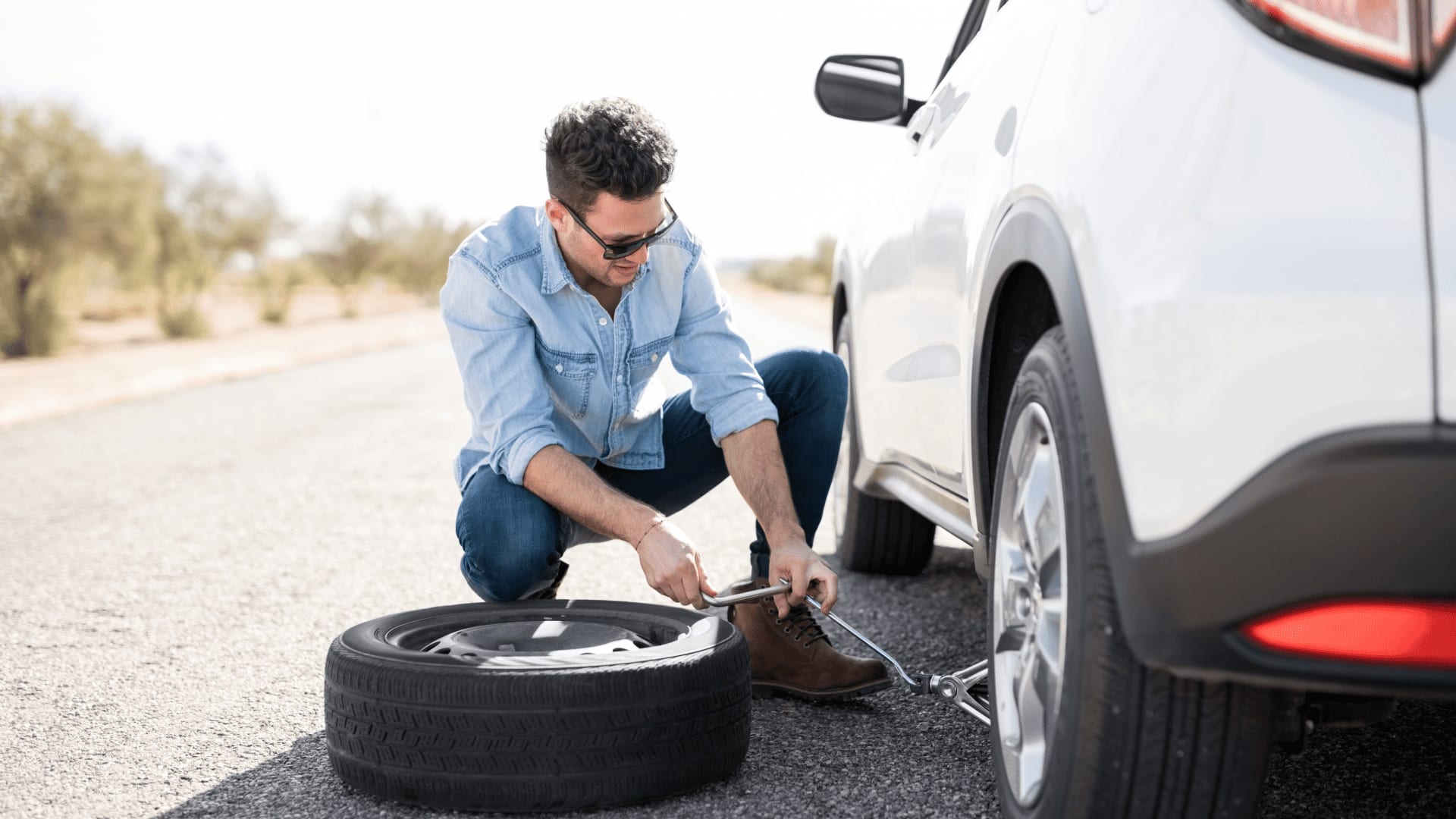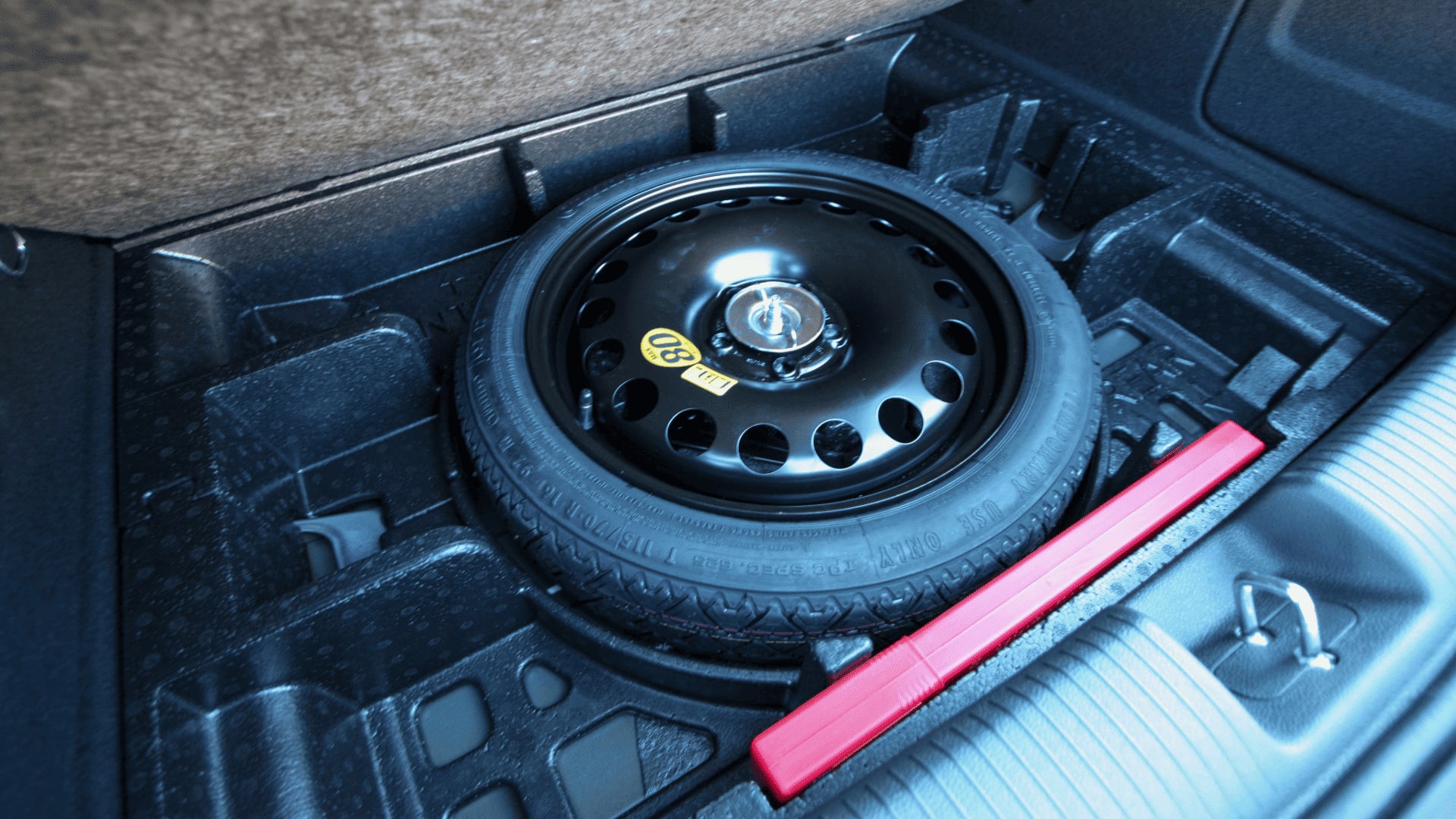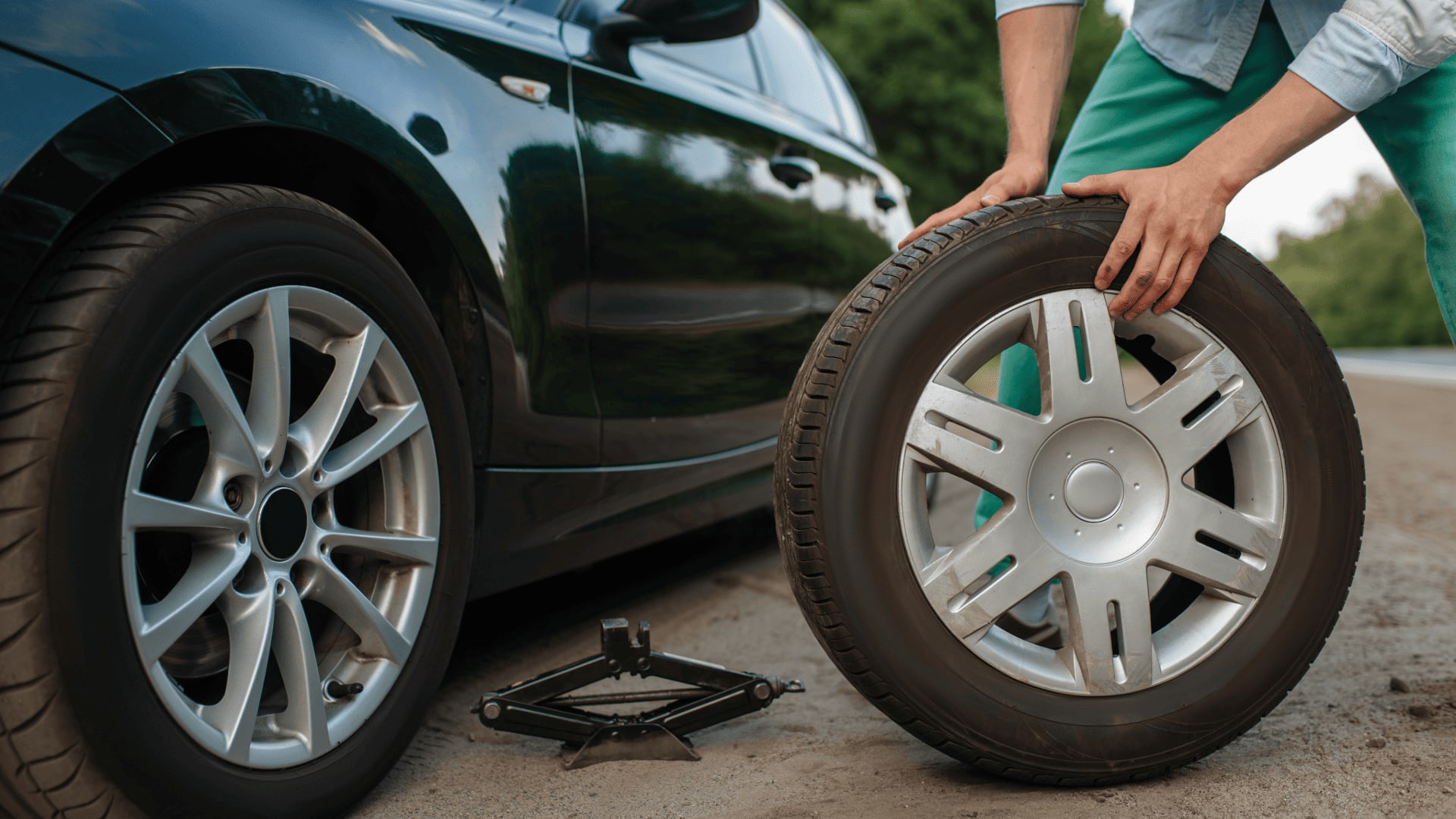Tire buying guides
Free shipping
Best price guarantee
Special pricing
Financing with Resolve
Easy returns

Picking the right spare tire is an essential part of vehicle preparedness. Whether dealing with a flat tire or planning for emergencies, having a spare that fits your vehicle and driving needs ensures safety and convenience on the road.
Many drivers overlook the importance of choosing a spare tire compatible with their vehicle. With various options available—full-size spares, compact "donuts," and temporary space-saver tires—understanding the differences can help you make the best choice.
This guide will break down the key factors to consider when selecting a spare tire, from size and compatibility to storage and driving limitations. By the end, you’ll know exactly what to look for, ensuring you have a reliable backup that keeps you moving when you need it most.
Why Choosing the Right Spare Tire Matters
Having the right spare tire isn’t just about convenience—it’s about safety and ensuring your vehicle stays in top condition. A properly chosen spare tire gives you peace of mind, knowing you have a reliable backup in case of a flat or other tire emergency.
The right spare should match your vehicle’s size, load capacity, and speed rating while fitting securely in your designated storage space. A well-matched spare allows for a smooth, hassle-free tire change, helping you get back on the road quickly with minimal disruption.
Beyond convenience, a properly fitted spare protects your vehicle’s essential components. An ill-fitting or incompatible spare can put unnecessary strain on your suspension, brakes, and drivetrain, leading to premature wear and potentially costly repairs.
Taking the time to select the right spare tire is a small step that can make a big difference when it matters most—keeping you safe, prepared, and on the move.
How to Choose the Best Spare Tire for Your Car
Selecting the right spare tire comes down to your vehicle’s needs, driving habits, and available storage space. There are a few different types to consider, each with its own advantages.
A full-size spare offers the same performance and stability as your regular tires, making it ideal for long-distance driving and seamless integration into your tire rotation schedule. However, these spares take up more storage space, which may not be practical for all vehicles.
A compact spare, often called a "donut," is a space-saving alternative designed for emergency use. Lightweight and easy to store, these spares are great for vehicles with limited trunk space. However, they come with speed and distance limitations, meaning they should only be used temporarily until you can replace or repair your main tire.
If storage is a concern but you want a backup option, folding spares offer a unique solution. These tires collapse for compact storage but require inflation before use. They’re a good middle-ground option for those who need to maximize space without sacrificing preparedness.
Ultimately, the best spare tire for you depends on your driving habits and storage constraints. If you frequently take long trips or drive in remote areas, a full-size spare may be the best choice. If you mostly drive in urban settings and need to conserve space, a compact or folding spare could be the better option. Taking the time to choose the right spare ensures you’re prepared for the unexpected—without compromising safety or convenience.
1. Choose the Right Type of Spare Tire
Picking the right spare tire depends on your vehicle’s needs and your driving habits. If you want a full-size spare, it will match your regular tires, providing the same performance and handling. This is ideal if you want a seamless fit into your tire rotation schedule, but keep in mind that these spares take up more storage space, so check if your vehicle can accommodate one.
If space is limited, a compact spare, or “donut,” is a lightweight, space-saving option designed for temporary use. These spares are great for emergency situations, allowing you to get to a service station, but they have speed and distance limitations, so they shouldn’t be driven on for long.
A temporary or “space saver” spare is a compromise between a full-size and a compact spare. It takes up less space than a full-size spare but offers slightly better reliability than a donut, making it a good option for short trips. Many modern vehicles come with these as standard since they strike a balance between convenience and practicality.
Understanding the strengths of each type helps you choose the best spare for your situation, ensuring you’re prepared for unexpected flats without sacrificing safety or convenience.
2. Ensure Your Spare Tire is the Right Fit
Making sure your spare tire is compatible with your vehicle is key to safety and performance. Start by checking your owner’s manual, which lists the recommended tire size, load capacity, and pressure levels. Following these guidelines ensures your spare will properly support your vehicle without affecting handling or safety features.
For extra accuracy, use a tire buying guide from a trusted source to match your vehicle’s specifications with the right spare tire options. This is especially important for vehicles with unique requirements, such as sports cars or off-road vehicles, that need specific tire characteristics for optimal performance.
Finally, verify that the spare tire physically fits in your vehicle’s wheel well or storage compartment. Check the tire’s diameter and width to avoid clearance issues or interference with mechanical components. Ensuring a proper fit means your spare will be securely attached and ready to perform when you need it most.
3. Find the Best Spare Tire Storage Option

Knowing where your spare tire is stored can make all the difference in an emergency. Many vehicles come with built-in compartments under the trunk floor, designed to securely hold full-size spares while keeping the trunk space neat and usable.
If your vehicle has limited storage space, other options like rear-mounted or under-the-vehicle storage might be more practical. Rear-mounted spares—common in SUVs and off-road vehicles—offer easy access and free up interior space. Meanwhile, under-the-vehicle storage helps conserve trunk space but can be harder to reach, especially in bad weather or rough terrain.
Accessibility matters, especially when you need to change a tire quickly. Some storage locations may require extra tools or more time to access, which can be frustrating in an urgent situation. Choosing a spare tire storage option that balances convenience and practicality will ensure you're prepared when a flat tire happens.
4. Choosing Between a Full-Size and a Donut Spare Tire
When selecting a spare tire, it's important to weigh the pros and cons of full-size spares and donut spares based on your driving habits and storage capacity.
Full-size spares function just like your regular tires, making them the best option for long-distance drivers or those who travel in remote areas where roadside assistance may not be readily available. They provide the same durability, handling, and reliability as your main tires, so you can continue driving without restrictions. However, they take up more storage space, which may not be ideal for smaller vehicles.
Donut spares (or space-savers) are lightweight, compact, and designed for temporary use. They are a great fit for city drivers or those with limited trunk space, allowing for easy storage. However, they have restrictions on speed and distance, typically meant to get you to the nearest repair shop. Using a donut spare for too long can affect vehicle handling and put extra strain on components like ABS and traction control.
When deciding which spare is best for you, consider your driving patterns and how often you might need a spare. If you frequently take long trips or drive in areas with limited access to tire services, a full-size spare offers peace of mind. If you mostly drive in urban areas and prioritize space, a donut spare may be the more practical choice.
5. Where to Buy a Spare Tire
Finding the right place to buy a spare tire is just as important as choosing the tire itself. A reliable retailer will ensure you get a spare that fits your vehicle’s specifications and provides the performance you need in an emergency.
Brick-and-mortar tire shops offer the advantage of in-person assistance, where you can consult with experts to confirm compatibility. These stores often carry a variety of brands and sizes, allowing you to compare options and get professional installation services.
Online retailers provide a convenient alternative, often featuring detailed product descriptions, customer reviews, and competitive pricing. Shopping online allows you to browse multiple options, compare brands, and even take advantage of discounts—all from the comfort of your home. Many online stores also offer fast shipping, making it easy to have your spare tire delivered directly to your door.
When selecting a retailer, whether online or in-store, look for one that provides clear product details, compatibility guides, and expert customer support to help you make an informed choice. A reputable seller will ensure that your spare tire meets your vehicle’s needs, giving you confidence on the road.
Tips for Choosing the Right Spare Tire

Picking the right spare tire is just the first step—keeping it in good condition ensures it’s ready when you need it. Regular maintenance and a little preparation go a long way in making sure your spare is reliable in an emergency.
Start by checking tire pressure regularly, ideally once a month as part of your routine vehicle maintenance. Even if the spare isn’t in use, pressure can drop over time, so keeping it properly inflated ensures it’s ready to support your vehicle safely when needed.
Inspect your spare periodically for signs of wear or damage. Even if it hasn’t been used, aging can cause cracks, punctures, or other issues that could make it unreliable. If you notice any damage, replace it promptly to avoid being stranded with a faulty spare.
Knowing how to install your spare is just as important as having one. Take a few minutes to familiarize yourself with the process—practice changing a tire in a safe space so you’re prepared if the need arises. This can save valuable time and reduce stress in a real roadside situation.
Finally, consider your driving habits and typical conditions when selecting a spare. If you frequently drive in rural or off-road areas, a full-size spare might be the best choice for durability. City drivers may prefer a compact spare to save space, especially if longer distances aren’t a concern.
Choosing the right spare tire is about peace of mind and preparedness. By ensuring it fits your vehicle, storing it properly, and keeping it in good shape, you’ll be ready for whatever the road throws your way. When you’re ready to find the perfect spare, shop with us online and get the best deals to keep you moving with confidence.
Ready to find the perfect tires?
Search By